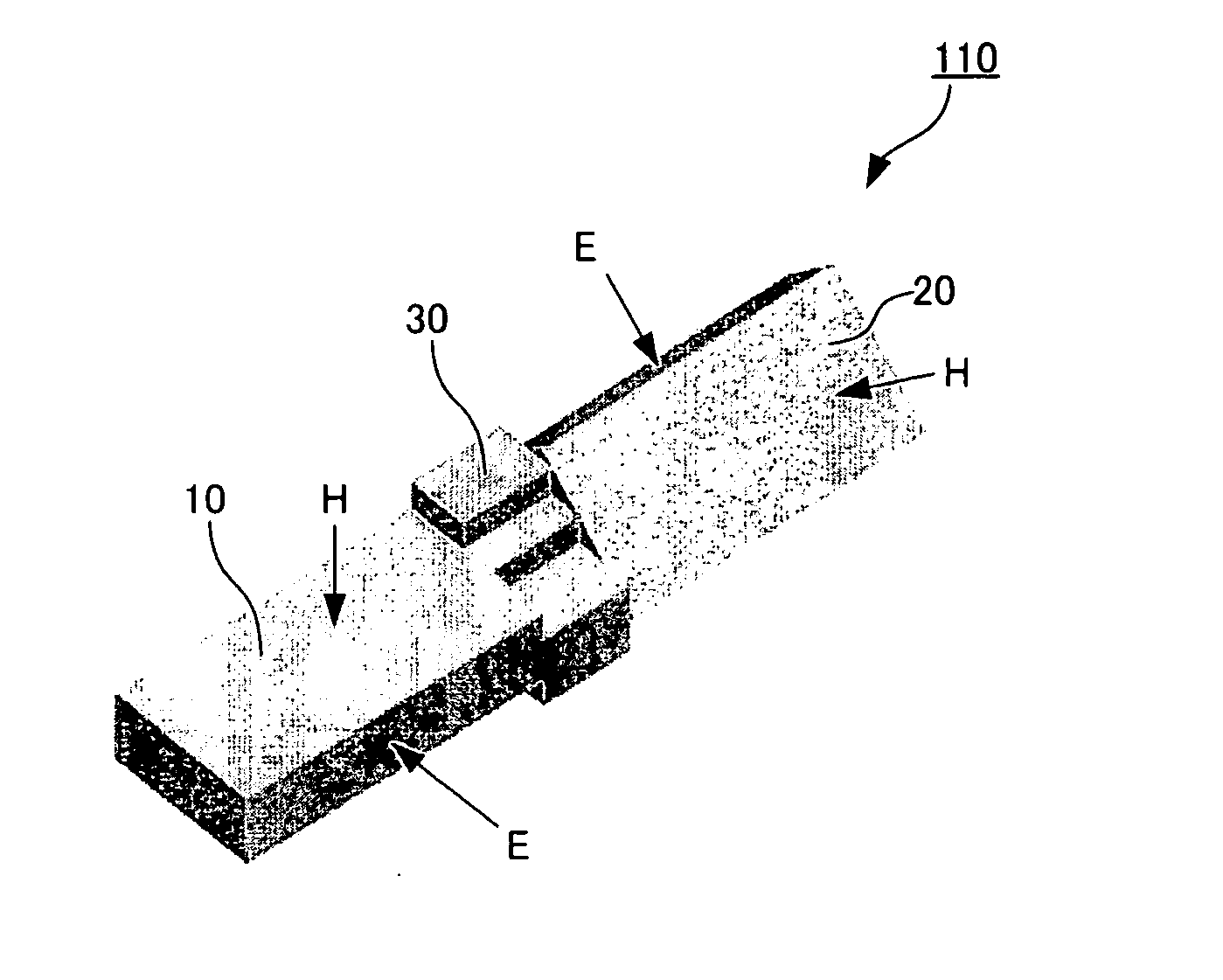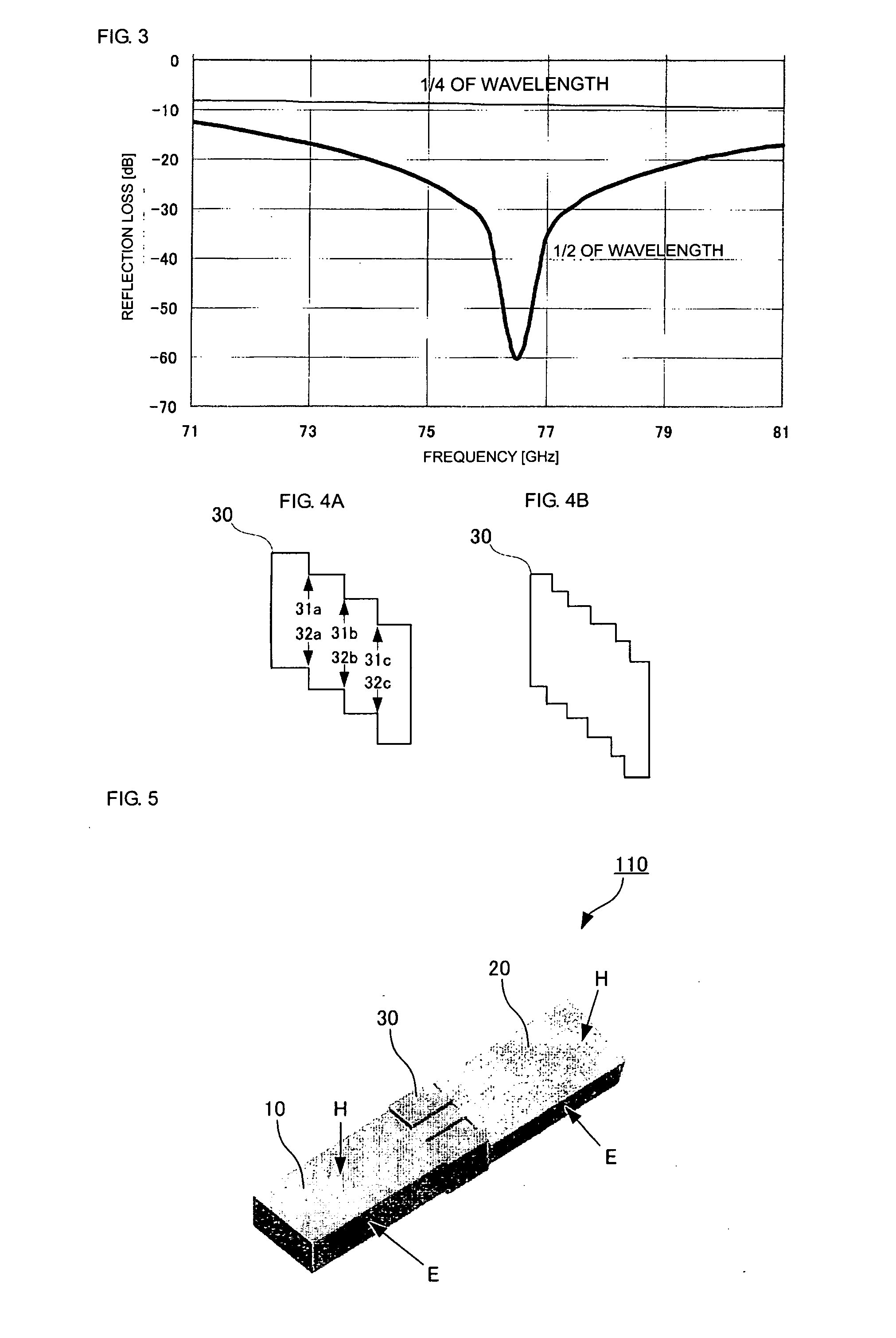Twist waveguide and radio device
- Summary
- Abstract
- Description
- Claims
- Application Information
AI Technical Summary
Benefits of technology
Problems solved by technology
Method used
Image
Examples
first embodiment
[0043] A twisted waveguide will now be described with reference to FIGS. 1 to 3.
[0044]FIG. 1 is a perspective view illustrating a three-dimensional configuration of an inside (electromagnetic-wave propagation path) of a twisted waveguide. A twisted waveguide 110 includes a first rectangular waveguide element 10 corresponding to a first rectangular propagation path element according to the present invention; a second rectangular waveguide element 20 corresponding to a second rectangular propagation path element according to the present invention; and a connection element 30. The first rectangular waveguide element 10 and the second rectangular waveguide element 20 propagate an electromagnetic wave of TE10 mode and each have an H plane extending longitudinally and an E plane extending laterally when viewed in cross section taken along a plane perpendicular to a direction of electromagnetic-wave propagation. The reference characters H in FIG. 1 each indicate a surface parallel to a lo...
third embodiment
[0054]FIG. 5 illustrates a twisted waveguide according to a In this embodiment, H plane of the second rectangular waveguide element 20 is inclined at an angle of 15° with respect to H plane of the first rectangular waveguide element 10. This means that the connection element 30 rotates the plane of polarization of an electromagnetic wave propagating through the connection element 30 by an angle of 15°. Consequently, when the rotation angle is to be reduced, the angle of inclination of the staircase portion of the connection element 30 is made smaller, whereby the height of each step of the staircase is reduced. In contrast, if the rotation angle is to be increased, the angle of inclination of the staircase portion of the connection element 30 is made larger, whereby the height of each step of the staircase is increased.
fourth embodiment
[0055] A twisted waveguide will now be described with reference to FIGS. 6 and 7.
[0056] Each of the drawings mentioned above illustrates only the internal structure of the electromagnetic-wave propagation path. Specifically, the twisted waveguide can be formed by assembling together a plurality of metal blocks having grooves formed therein by, for example, cutting. FIG. 6 includes diagrams illustrating three examples of such an assembly. Each diagram is a cross-sectional view of the connection element taken along a plane perpendicular to the direction of electromagnetic-wave propagation. A broken line in the diagrams corresponds to an attachment plane (dividing plane) between metal blocks. The relationship between the connection element and the first and second rectangular waveguide elements is the same as that shown in FIGS. 1 and 2. In each of diagrams (A) and (C), a plane parallel to H plane of the first rectangular waveguide element functions as a dividing plane. Specifically, ...
PUM
 Login to View More
Login to View More Abstract
Description
Claims
Application Information
 Login to View More
Login to View More - R&D
- Intellectual Property
- Life Sciences
- Materials
- Tech Scout
- Unparalleled Data Quality
- Higher Quality Content
- 60% Fewer Hallucinations
Browse by: Latest US Patents, China's latest patents, Technical Efficacy Thesaurus, Application Domain, Technology Topic, Popular Technical Reports.
© 2025 PatSnap. All rights reserved.Legal|Privacy policy|Modern Slavery Act Transparency Statement|Sitemap|About US| Contact US: help@patsnap.com



